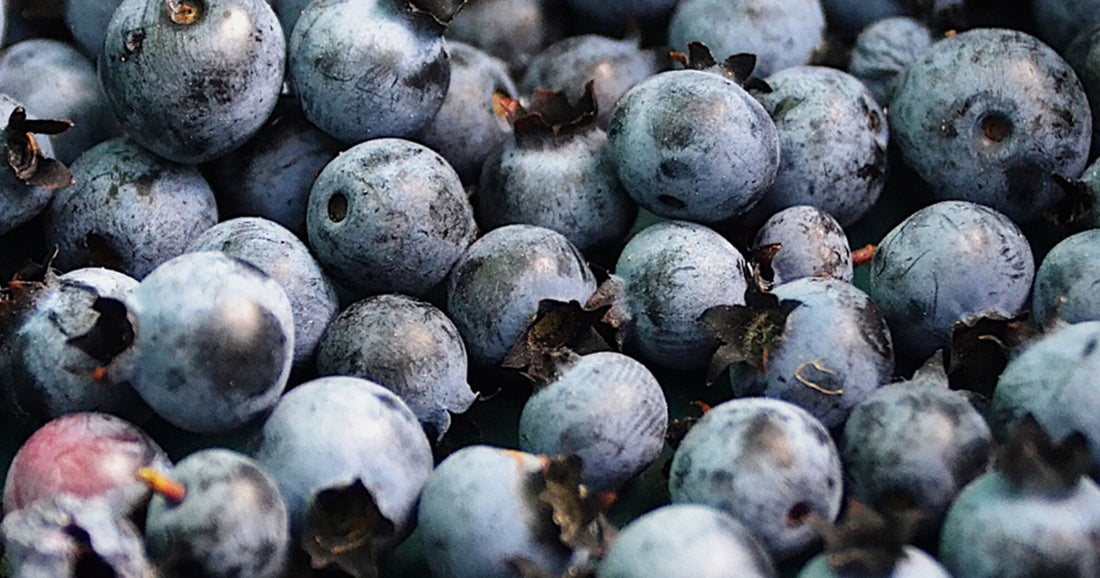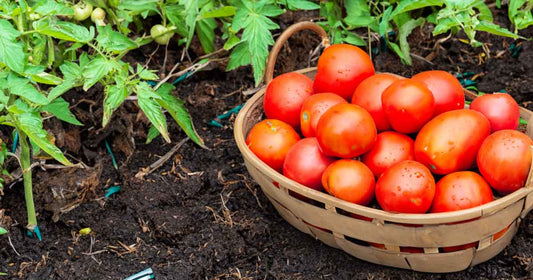
Growing Blueberries: Essential Nutrients & Soil Conditions
Share
Before You Grow Blueberries - Here's What You Should Know
Discover the essential nutrients, soil conditions, and fertilizers needed for thriving blueberry plants in California. Learn about primary, secondary, and micronutrients, soil pH, texture, moisture, and mulching tips.
Essential Nutrients, Soil Conditions, and Fertilizers for Growing Blueberries in California
Blueberries are not only delicious but also packed with essential nutrients and antioxidants, making them a popular choice for growing commercially or at home in California. However, growing blueberries successfully requires a thorough understanding of their specific nutritional needs and soil conditions. This guide provides detailed information on the essential nutrients, ideal soil conditions, and recommended fertilizers necessary to cultivate thriving blueberry plants in California's unique climate. Whether you're a seasoned grower or just starting, these insights will help ensure a bountiful harvest of sweet, juicy blueberries.
Essential Primary Nutrients for Blueberries (N-P-K)
Blueberries require three primary nutrients for optimal growth: nitrogen (N), phosphorus (P), and potassium (K).
Nitrogen (N)
Nitrogen is crucial for promoting lush foliage and vigorous plant growth, helping blueberries develop strong, healthy leaves.
- Role: Promotes vigorous growth and lush foliage.
- Source: Ammonium sulfate.
- Suggested Fertilizers: Ammonium sulfate, blood meal, cottonseed meal.
Phosphorus (P)
Phosphorus supports root development and fruit production, ensuring that the plants establish a robust root system and produce plentiful, high-quality berries.
- Role: Supports root development and fruit production.
- Source: Bone meal, rock phosphate.
- Suggested Fertilizers: Bone meal, rock phosphate, fish bone meal.
Potassium (K)
Potassium plays a vital role in overall plant health, enhancing disease resistance and improving the plant's ability to withstand stress.
- Role: Essential for overall plant health and resistance to diseases.
- Source: Potassium sulfate.
- Suggested Fertilizers: Potassium sulfate, kelp meal, greensand.
By providing balanced amounts of these primary nutrients, you can ensure your blueberry plants thrive and yield a bountiful harvest.
Much Needed Micronutrients When Growing Blueberry Plants
Blueberries require essential micronutrients, including iron, manganese, zinc, copper, and boron, for optimal growth. These micronutrients support crucial functions such as chlorophyll production, enzyme activation, and reproductive growth, ensuring healthy plants and abundant fruit production.
Iron (Fe)
- Role: Essential for chlorophyll production and energy transfer within the plant.
- Source: Chelated iron, iron sulfate.
- Suggested Fertilizers: Iron chelate (EDDHA), iron sulfate.
Manganese (Mn)
- Role: Involved in photosynthesis and nitrogen metabolism.
- Source: Manganese sulfate, chelated manganese.
- Suggested Fertilizers: Manganese sulfate, manganese chelate.
Zinc (Zn)
- Role: Important for enzyme function and growth regulation.
- Source: Zinc sulfate, chelated zinc.
- Suggested Fertilizers: Zinc sulfate, zinc chelate.
Copper (Cu)
- Role: Plays a role in photosynthesis and lignin synthesis.
- Source: Copper sulfate, chelated copper.
- Suggested Fertilizers: Copper sulfate, copper chelate.
Boron (B)
- Role: Necessary for cell wall formation and reproductive growth.
- Source: Borax, boric acid.
- Suggested Fertilizers: Borax, boric acid.
Optimum Soil Conditions Before Planting Blueberry Bushes
Blueberries thrive in acidic soils with a pH between 4.5 and 5.5, sandy loam or loam texture, and high organic matter content. These conditions ensure proper nutrient uptake, good drainage, and consistent moisture levels, which are essential for healthy plant growth and abundant fruit production. Maintaining these soil conditions in California's unique climate is crucial for the successful cultivation of blueberries.
Soil pH
- Ideal Range: Blueberries thrive in acidic soils with a pH between 4.5 and 5.5.
- Management: Regularly test soil pH and amend with sulfur or acidifying fertilizers as needed.
Soil Texture
- Preferred Texture: Sandy loam or loam soils with good drainage.
- Improvement: Add organic matter, such as peat moss or compost, to enhance soil structure and drainage.
Soil Moisture
- Requirement: Consistent moisture is vital; avoid waterlogging.
- Irrigation: Drip irrigation is recommended to provide steady water supply without waterlogging the soil.
Organic Matter
- Importance: High organic matter content helps maintain soil acidity and improves soil structure.
- Sources: Peat moss, pine needles, and compost are excellent organic amendments.
Mulching
- Benefits: Mulching with pine bark or straw helps retain moisture, suppress weeds, and maintain soil acidity.
- Application: Apply a 2-4 inch layer of mulch around the base of the plants, avoiding direct contact with the stems.
It's crucial to test soil pH regularly and amend it as necessary using sulfur or acidifying fertilizers. Organic matter, such as peat moss or pine needles, can help maintain soil acidity and improve soil structure.
Consistent moisture is vital for blueberry growth. Drip irrigation is recommended to provide steady water supply without waterlogging the soil.
What It Takes To Grow Blueberries in California
Growing blueberries in California requires a balanced supply of essential nutrients, appropriate fertilizers, and careful soil management. By understanding and providing the necessary primary, secondary, and micronutrients, along with maintaining the proper soil pH, texture, moisture, and organic matter content, you can enjoy a bountiful blueberry harvest.




